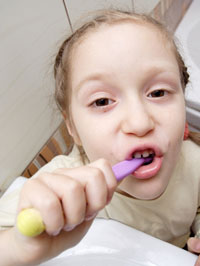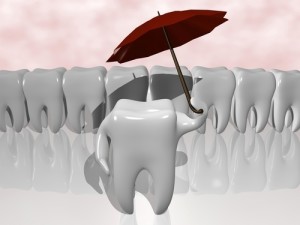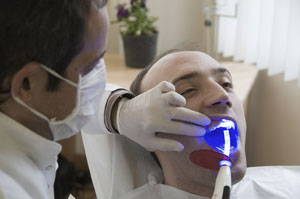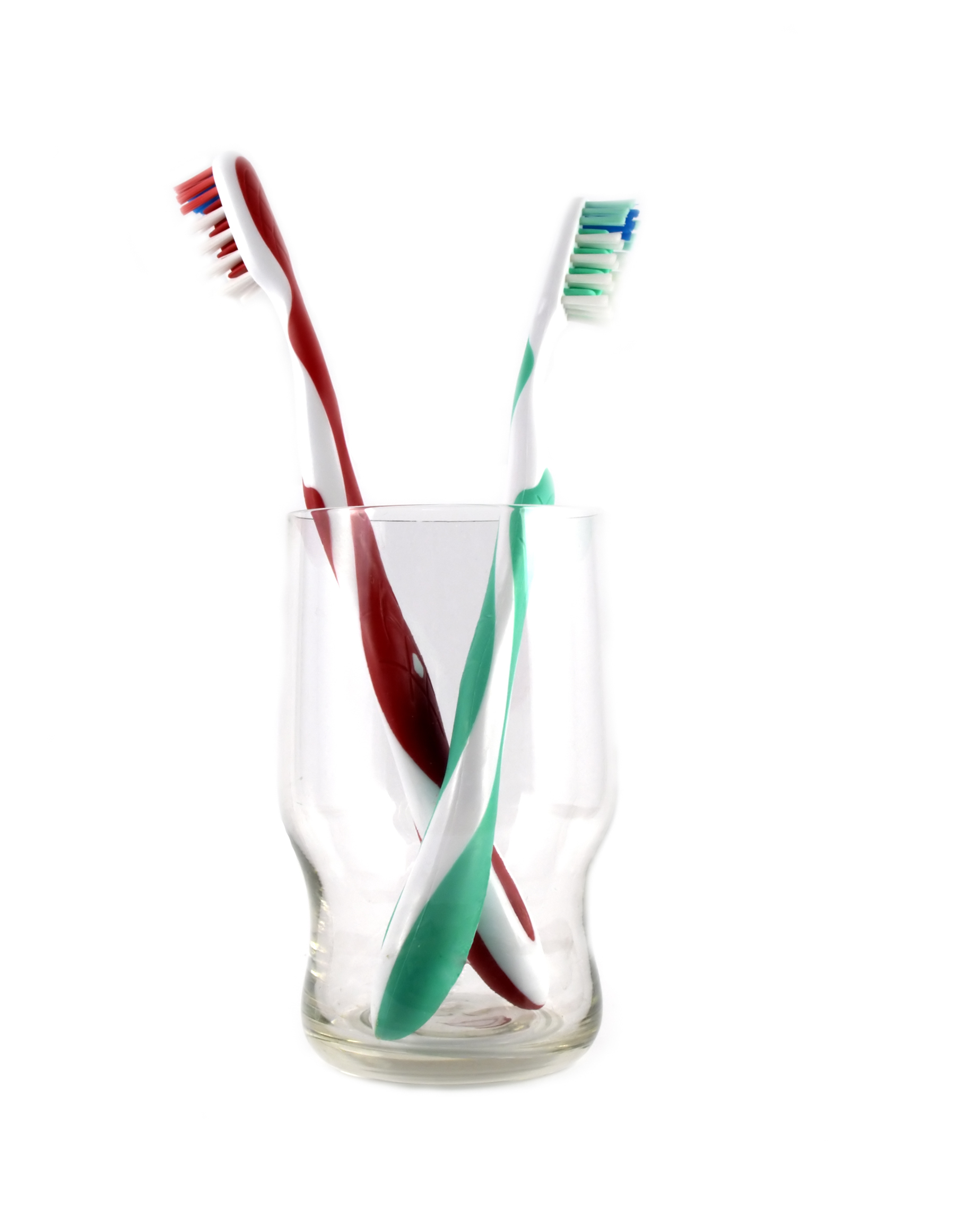 Dental caries (cavities) is the most prevalent childhood disease, and 90% of adults have had a cavity. Gum disease is responsible for 70% of adult tooth loss. A few simple habits could help you reduce your risk for cavities and gum disease – and improve your potential for keeping natural teeth long into your golden years. Kids and adults alike can benefit from these 5 quick and easy oral health tips. Some you’ve known since kindergarten, while others may be news. Continue reading 5 Tips for Tip-Top Teeth
Dental caries (cavities) is the most prevalent childhood disease, and 90% of adults have had a cavity. Gum disease is responsible for 70% of adult tooth loss. A few simple habits could help you reduce your risk for cavities and gum disease – and improve your potential for keeping natural teeth long into your golden years. Kids and adults alike can benefit from these 5 quick and easy oral health tips. Some you’ve known since kindergarten, while others may be news. Continue reading 5 Tips for Tip-Top Teeth
Category: Uncategorized
Popular Misconceptions about Dental Decay
Myths often start with a grain of truth, and that’s the case for the dental misconceptions most people have absorbed over the years. No matter how educated a person perceives they are concerning dental health, it’s possible a few false impressions have taken root. Such as…
most people have absorbed over the years. No matter how educated a person perceives they are concerning dental health, it’s possible a few false impressions have taken root. Such as…
- Cavities are a fact of life.
It’s common knowledge that there are very real, clinically-evidenced explanations for dental health issues, so why is it that many times you cross your fingers and hope luck is on your side when it’s time to take the kids to the dentist? Recent advancements in research have focused a lot of attention on early intervention methods. So with proper education, fluoride, increased access to dental care, and ongoing research, children in this day and age may not need to worry about cavity development. No four-leaf clovers necessary. Continue reading Popular Misconceptions about Dental Decay
The Scoop on Tooth Sensitivity
 Tooth sensitivity is one of the chief complaints dental offices receive. It results when gums recede and expose the tooth roots. Tubules in the tooth roots lead directly to the tooth’s nerve, allowing stimuli such as hot or cold to reach the nerve and cause the associated pain. Several factors contribute to gum recession, including:
Tooth sensitivity is one of the chief complaints dental offices receive. It results when gums recede and expose the tooth roots. Tubules in the tooth roots lead directly to the tooth’s nerve, allowing stimuli such as hot or cold to reach the nerve and cause the associated pain. Several factors contribute to gum recession, including:
Brushing Technique – Brushing aggressively or with a hard-bristled brush can wear down the tooth enamel and expose the sensitive layers of dentin. Improper brushing can also damage the gum tissue and expose tooth roots. Continue reading The Scoop on Tooth Sensitivity
Manly and Macho are No Longer Synonymous
 The Academy of General Dentistry reports that for many years, men have been “less likely to visit the dentist” than women because they don’t see a need, they feel afraid or embarrassed, or they simply won’t make time. This has been the status quo for a while now, but times are changing. These days, dentists are treating more and more men with – oddly enough – cosmetic procedures, like teeth whitening, veneers, and composite bonding.Why would men want a nicer smile? It’s all about the money, baby.
The Academy of General Dentistry reports that for many years, men have been “less likely to visit the dentist” than women because they don’t see a need, they feel afraid or embarrassed, or they simply won’t make time. This has been the status quo for a while now, but times are changing. These days, dentists are treating more and more men with – oddly enough – cosmetic procedures, like teeth whitening, veneers, and composite bonding.Why would men want a nicer smile? It’s all about the money, baby.
One private company’s study reveals that after teeth whitening, people are more likely to land a job – and a at a higher rate of pay. Another poll by the American Academy of Cosmetic Dentistry tells us that people with an attractive smile are considered more friendly, intelligent, and successful than others. In this economy, you can’t afford not to invest in your image, whether you’re a man or a woman.
So if you’d like a brighter, straighter, more attractive smile, talk with your dentist about cosmetic dentistry. Today’s procedures begin at moderate prices, and for more complex smile makeovers, financing is available.
Arm Yourself with the Facts About: Oral Cancer
Hearing that the dentist screens for oral cancer at your checkups may surprise you. True, oral cancer may not be  talked as much as other types of cancer, but make no mistake: if it’s not caught early, it’s often deadly. With a high treatment success rate in cases where the cancer was spotted and diagnosed early, it’s clear why your dentist makes screening a regular part of your dental visits. Continue reading Arm Yourself with the Facts About: Oral Cancer
talked as much as other types of cancer, but make no mistake: if it’s not caught early, it’s often deadly. With a high treatment success rate in cases where the cancer was spotted and diagnosed early, it’s clear why your dentist makes screening a regular part of your dental visits. Continue reading Arm Yourself with the Facts About: Oral Cancer
FAQs: Women and Oral Health
 Statistics show that women are more likely to visit a dentist then men—but does this mean women have better oral health? Not necessarily. Women have specific oral health needs, and hormonal fluctuations throughout their lifetime can make them more susceptible to periodontal disease. Here are a few frequently asked questions concerning women’s oral health at various stages of life. Continue reading FAQs: Women and Oral Health
Statistics show that women are more likely to visit a dentist then men—but does this mean women have better oral health? Not necessarily. Women have specific oral health needs, and hormonal fluctuations throughout their lifetime can make them more susceptible to periodontal disease. Here are a few frequently asked questions concerning women’s oral health at various stages of life. Continue reading FAQs: Women and Oral Health
More than You Ever Wanted to Know about Brushing Your Teeth
Thousands of years ago, people still liked fresh breath and a shiny smile. Tribal people used sticks to clean their teeth, and over time, this evolved into a Chinese hog-hair toothbrush. Today, we prefer a cleaner and more effective option ;-).
Choosing Your Tools
• Never buy a toothbrush with hard bristles.
• Make sure your toothbrush’s size suits your mouth.
• Electric toothbrushes can be more effective than manual styles.
• Use an ADA-approved fluoride toothpaste.
• Use a tongue scraper or gentle brushing to clean plaque from your tongue.
• Find floss that works for you – there’s flat, round, waxed, non-waxed, minty, and even pre-strung picks.
Tips for Brushing
• Brush morning and night – and after meals, if you like.
• Brush for two minutes at each session.
• If you can’t brush after meals, rinse with water.
• Replace your toothbrush every two to four months and after an illness.
• Microwave your damp toothbrush for one minute every month to kill bacteria. Continue reading More than You Ever Wanted to Know about Brushing Your Teeth
The Clock is Ticking on Your Insurance Benefits
The year has a way of flying by. Before you know it, the holidays are here, and the last thing you’re thinking about is dental insurance. There are good reasons to do just that, though.  Between the food, family, and festivities this season brings, take a moment to consider how you can make the most of your benefits before year’s end.
Between the food, family, and festivities this season brings, take a moment to consider how you can make the most of your benefits before year’s end.
Here are a few reasons making that dental appointment now can really pay off. Continue reading The Clock is Ticking on Your Insurance Benefits
Important News for Patients with Diabetes
The link between gum disease and diabetes has been debated for some time. Researchers agree that the link exists, but the relationship is unclear. Are patients with diabetes more  susceptible to gum disease, or is it the other way around? In recognition of National Diabetes Month, the International Diabetes Federation (IDF) has released some new guidelines on oral health for people with diabetes.
susceptible to gum disease, or is it the other way around? In recognition of National Diabetes Month, the International Diabetes Federation (IDF) has released some new guidelines on oral health for people with diabetes.
According to recent studies, a two-way relationship exists between oral health and diabetes. Gum disease, an infection of the soft tissues that support the teeth, increases blood sugar levels, which elevates the risk of diabetic complications. Patients who already have diabetes are more susceptible to infection, and therefore, more likely to contract the disease. The bottom line? Everyone, especially diabetics, needs to pay close attention to his or her oral health. Continue reading Important News for Patients with Diabetes
Enjoy Stress-Free Dental Visits with These Simple Preparations
 Many people avoid dental visits because of anxiety, stress, or fear. If you don’t like visiting the dentist, but sedation dentistry would be overkill, consider these tips:
Many people avoid dental visits because of anxiety, stress, or fear. If you don’t like visiting the dentist, but sedation dentistry would be overkill, consider these tips:
- Tell the dentist and team that you don’t feel comfortable. They can do a few things to help you.
- Avoid caffeine before your visit.
- Bring an iPod to your appointment, and listen to music during your exam or procedure. Listen to soothing music before your visit, as well. Continue reading Enjoy Stress-Free Dental Visits with These Simple Preparations